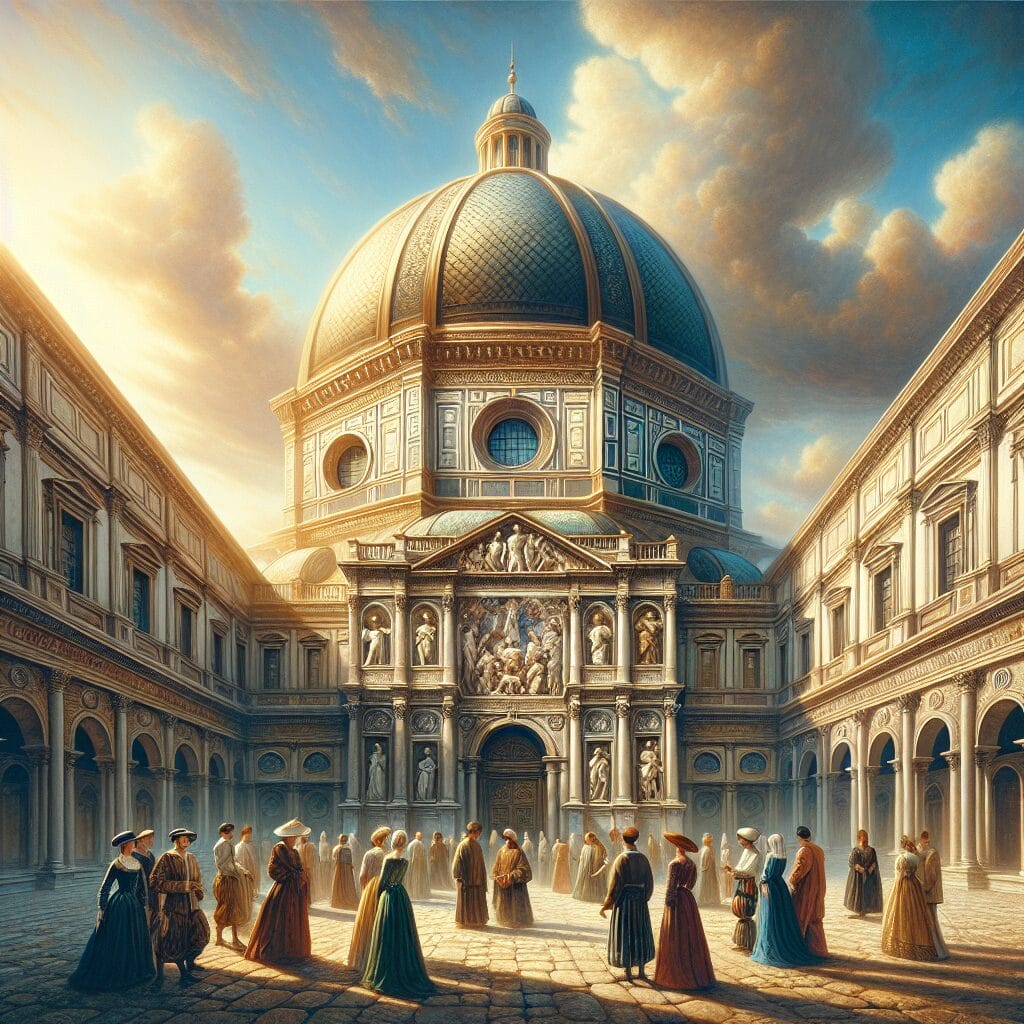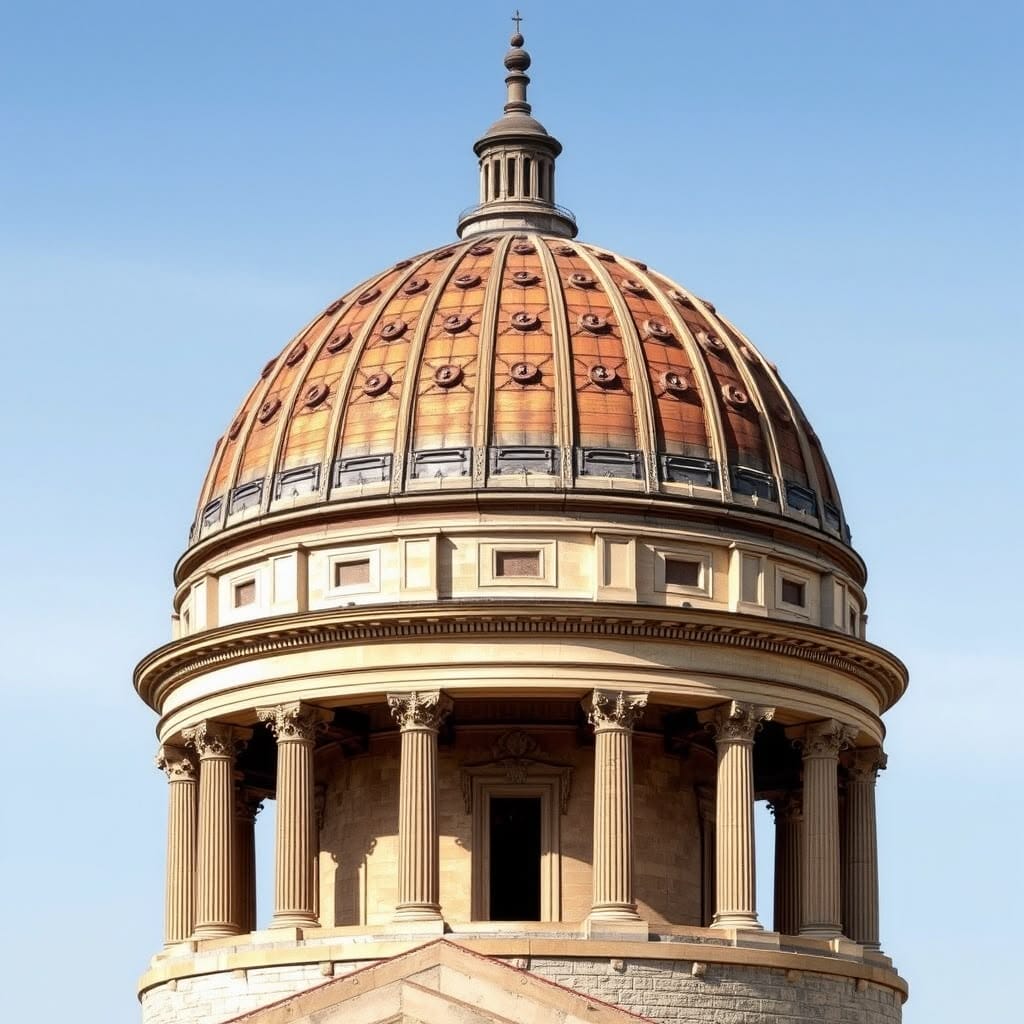Roman architecture stands as a testament to innovative design and engineering prowess. Among its many contributions, the development of domes marks a significant milestone in architectural history. These structures allowed for the creation of vast, open spaces without the need for internal supports, revolutionizing building design.
The evolution of domes, from modest beginnings in Nero’s Golden House to the grandiosity of the Pantheon, illustrates their transformative role. This article explores how Roman domes not only shaped ancient structures but also influenced architectural styles throughout history and into the modern era.
Engineering Marvels of Roman Domes
The Romans revolutionized architectural design with their groundbreaking construction of domes. Central to this achievement was their mastery of concrete, a versatile material that allowed them to mold complex shapes and build structures of unprecedented scale (source). This innovation distinguished Roman architecture from earlier civilizations, which primarily relied on stone.

A key technique was the use of arches and vaults, which efficiently redistributed weight, enabling the construction of hemispherical domes without internal supports. The Romans employed centring, a wooden framework, to support the structure during construction, allowing builders to work safely from the base to the apex.
“The Romans’ use of concrete and innovative engineering techniques allowed them to create vast, open spaces without the need for internal supports.”
Additionally, stiffening ribs within the concrete domes helped span large distances, ensuring the creation of expansive interiors. Structures like the Pantheon exemplify this, as its massive hemispherical dome remains the world’s largest unreinforced concrete dome, showcasing the Romans’ ability to construct vast, unobstructed spaces.
Nero’s Golden House
The Domus Aurea, or Nero’s Golden House, stands as a testament to Roman architectural prowess and imperial ambition. Constructed between 65-68 C.E. following a massive fire, it allowed Emperor Nero to build an opulent palace that redefined the cityscape of Rome. Designed by architects Severus and Celer, this expansive complex covered at least 50 hectares and included approximately 300 rooms, manicured gardens, a private bath complex, and an artificial lake.

A notable feature of the Domus Aurea is the Octagonal Room, which exemplifies innovative Roman engineering. Transitioning from an octagonal base to a hemispherical dome, it created a grand open space without internal supports. The use of concrete facilitated this design, making the room a significant architectural achievement. While the complex does not highlight smaller domes explicitly, dome-like structures such as the barrel-vaulted ceiling of the Nymphaeum of Polyphemus contribute to the intimate atmosphere of the room.
| Structure | Dome Type |
|---|---|
| Octagonal Room | Hemispherical Dome |
| Nymphaeum of Polyphemus | Barrel-vaulted Ceiling |
The Pantheon: A Masterpiece
The construction of the Pantheon in 125 AD is a testament to Roman ingenuity, showcasing a blend of advanced engineering techniques. The foundation was meticulously prepared with a circular trench for the rotunda, supported by pozzolana cement—a mix of grounded lime and volcanic earth. This powerful Roman cement held the structural elements together, allowing the edifice to withstand the test of time.

The Pantheon boasts the largest unreinforced concrete dome in the world, measuring 43.4 meters in diameter. Its construction utilized lighter materials, such as volcanic pumice, at higher altitudes to alleviate weight. The oculus, a central opening, ingeniously reduces load at the dome’s apex, contributing to its structural integrity and allowing natural light to flood the interior.
Beyond its engineering marvels, the Pantheon’s dome has had a profound impact on architectural design. It has inspired countless structures worldwide, from the U.S. Capitol to Thomas Jefferson’s Monticello. The dome’s influence extends across centuries, symbolizing the enduring legacy of Roman architectural mastery.
Influence on Renaissance Architecture
The Renaissance witnessed a profound revival of Roman architectural principles, largely fueled by the rediscovery of ancient texts and structures. Key architects of the period, such as Filippo Brunelleschi, drew inspiration from Roman domes, notably engineering the famous dome of Florence Cathedral, a feat that marked the return of domes to Western architecture.

Brunelleschi’s work emphasized the use of classical orders and mathematical proportions, concepts gleaned from Roman sources like Vitruvius. As Brunelleschi himself remarked, “Architecture aims at eternity,” reflecting his aspiration to recreate the timeless beauty of Roman designs.
Similarly, Michelangelo crafted the dome of St. Peter’s Basilica in Rome, blending classical knowledge with Renaissance innovation. His work, alongside Brunelleschi’s, exemplifies how Renaissance architects sought to evoke both emotion and reason through design.
These Renaissance domes, built with a renewed understanding of structural mechanics, marked a departure from the medieval period and underscored the enduring influence of Roman architecture. The blend of ancient techniques with contemporary innovation during the Renaissance continues to inspire modern architecture today.
Modern Interpretations
Roman domes continue to inspire contemporary architecture, evident in numerous modern buildings that echo the grandeur of ancient design. St. Paul’s Cathedral in London, with its iconic dome designed by Sir Christopher Wren, stands as a testament to this enduring influence. Similarly, the California State Capitol in Sacramento showcases Neoclassical architecture with a dome reminiscent of Roman principles.

Other notable examples include the Montreal Biosphere, a geodesic structure symbolizing innovative design, and the Louvre Abu Dhabi, which blends traditional elements with modern aesthetics through its intricate geometric dome.
The architectural principles of Roman domes, such as creating vast, uninterrupted spaces and employing innovative construction techniques, continue to inform modern design. Contemporary architects adapt these elements, focusing on both structural integrity and aesthetic appeal. This ongoing influence highlights the timelessness of Roman engineering and its ability to inspire new interpretations in today’s architectural landscape.
These buildings are a testament to how Roman architectural principles have been retained and adapted, ensuring that the legacy of Roman domes remains a significant force in shaping modern public spaces.
Engineering Techniques: Then and Now
The evolution of dome construction from ancient Rome to contemporary architecture showcases the remarkable advancements in engineering techniques and materials. Roman engineers pioneered the use of unreinforced concrete, enabling the creation of vast open spaces without internal supports. Their innovative formwork techniques, such as centering, laid the groundwork for modern construction practices.

| Technique | Ancient | Modern |
|---|---|---|
| Materials | Unreinforced concrete | Reinforced concrete, steel |
| Formwork | Radial and horizontal centering | Advanced modular systems |
| Structural Support | Visible ribs, brick lattices | Invisible support, tensioned cables |
In modern architecture, the integration of reinforced concrete and steel has revolutionized dome construction, allowing for even larger and more complex structures. Technologies such as computer-aided design (CAD) and precise modular systems facilitate the efficient creation of domes, ensuring both functionality and aesthetic appeal.
The enduring influence of Roman techniques is evident in contemporary masterpieces like the Louvre Abu Dhabi, which blends traditional design with cutting-edge technology. This fusion of ancient ingenuity and modern innovation continues to inspire architects globally, maintaining the legacy of Roman domes.
Aesthetic Appeal of Domes
Domes have long been celebrated for their aesthetic appeal in architectural design. Their graceful curves and smooth lines bestow a sense of elegance and grandeur, making them timeless elements that captivate the eye in both historic and contemporary settings. The use of features like the oculus in Roman domes not only enhances visual intrigue but also demonstrates the architectural ambition of the Roman Empire.

Beyond their visual impact, domes carry profound symbolic significance. They often represent power and spirituality, serving as cultural and historical markers within the built environment. For instance, the onion dome symbolizes the cosmos and the connection between heaven and earth, illustrating the relationship between the finite and the infinite.
In various architectural styles, domes seamlessly blend aesthetics with symbolism, enabling creative expression and enhancing the cultural narrative of buildings. Their ability to foster a sense of heritage and spiritual connection adds layers of meaning, making domes not only architectural features but also symbols of human aspiration and mastery.
Practical Benefits of Dome Structures
The architectural design of domes offers remarkable benefits in acoustics and lighting. The curved surfaces of domes serve to enhance sound reflection and diffusion, making them ideal for venues where acoustics are paramount, such as concert halls and theaters. This not only improves the auditory experience but also adds an aesthetic dimension by creating a harmonious blend of sound and space. Additionally, features like the oculus in Roman domes allow natural light to penetrate the interior, creating a dynamic interplay of light and shadow that enlivens the space beneath.

From a structural standpoint, domes exemplify efficiency and ingenuity. The absence of internal support columns results in vast, uninterrupted spaces, offering flexibility in layout and utilization. This open design fosters a sense of freedom and openness, which is both visually and functionally appealing. Furthermore, the use of materials like concrete, as seen in Roman engineering, facilitates the construction of massive dome structures while maintaining structural integrity. This innovation not only underpins the architectural brilliance of ancient times but also continues to inspire contemporary architectural practices.

